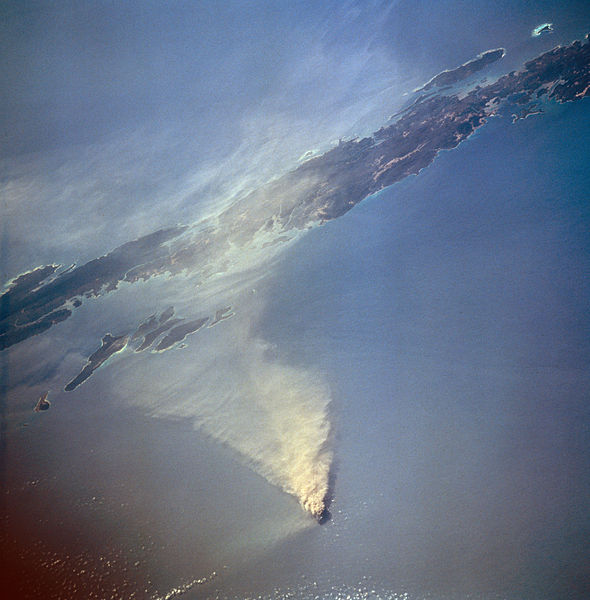Currently I am updating the lecture series of the Palaeoceanography module. Some of that only involves prettifying the slides. Sometimes it just means updating myself, if I need to read up on something. Sometimes it means re-organising information so that it forms a narrative that makes sense to me. But sometimes it means bringing things up to date with science.
One topic of which I realised it needed an update was the interplay of ice ages and volcanism; these may not be intuitively linked, but in reality they are. Volcanism pretty much is just liquids and gases, being lighter than the surrounding solids, escaping to the surface. A bit like an air bubble in lasagne. And such processes are dependent on pressure. Plonk a several kilometer thick ice sheet on a volcano and it will struggle to erupt. Take away that ice sheet and suddenly there is ash all over the place.
That ice sheet doesn't vanish, of course; if it melts it will just raise sea level. The sea also contains volcanoes! The mid-oceanic ridges are very important regions of volcanic activity. And they are different from land volcanoes; they don't hurl sun-blocking clouds of ash into the atmosphere, but they do exhaust CO2. And they will get suppressed if sea level is considerably higher. Were we to enter into an ice age, high latitude Northern hemisphere volcanism would get oppressed, and low-latitude marine volcanism would get enhanced.
Is that all there is to it? No, of course not. To name a few complicating factors: volcanoes exhaust both ash and greenhouse gases, so they simultaneously warm and cool the planet. Which is stronger depends on the volcano, and on where it is (latitude matters), and on the timescale, and more such things. Land volcanoes and mid-oceanic ridges operate with different delays to changes in loading. Ice sheets influence sedimentation, which is also a kind of load. Some ocean basins are asymmetric and not all volcanoes are equally affected. And you can go on like that!
When James made this lecture series, not much research on this topic had been done. I had to add it myself! Which is very satisfying. As I said: Science progresses!
Pic by NASA
I also found a picture of a Hallucigenia in his slides. Upside down! When the rather strange fossils of this creature were found they were initially interpreted as remains of a creature that walks around on spikes and has strange trunk-like structures on its back. Later that idea was reversed; consensus now is that the trunks are what it walked on, and the spikes are on its back. If you find spike-walking Hallucigenias in someone's slides you know they were not overly keen on revising them every year.
A modern reconstruction of Hallucigenia. Author: Jose Manuel Canete
In another module I have plenty of revision to do every year; I teach on human evolution (no, really) and pretty much every year someone finds a new Homo, or re-dates another Homo, and the state of science changes all the time. Exciting! In that module I have actually run into problems as you have to set your exam quite some time ahead. You can update your lectures if some breakthrough is reached, but the exam then still has to reflect pre-breakthrough-levels of knowledge!



No comments:
Post a Comment